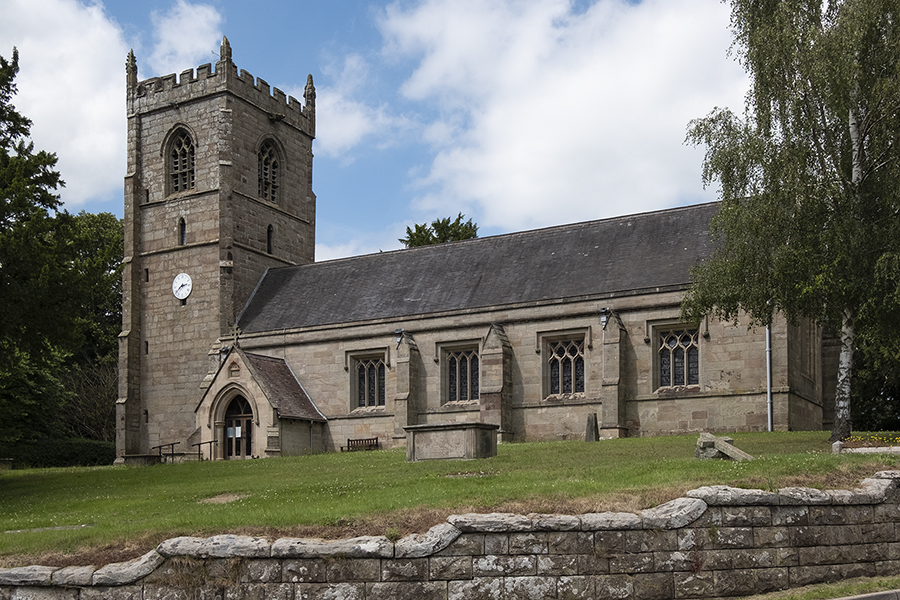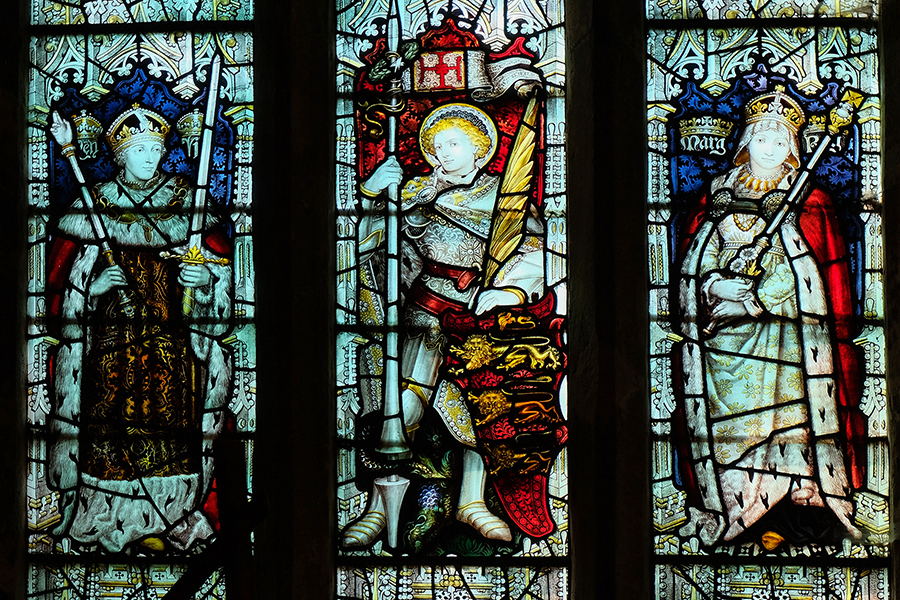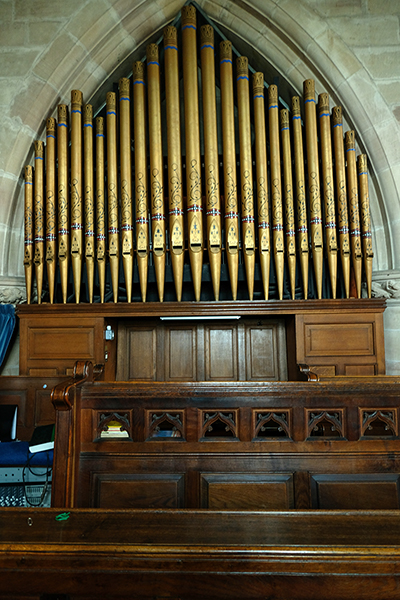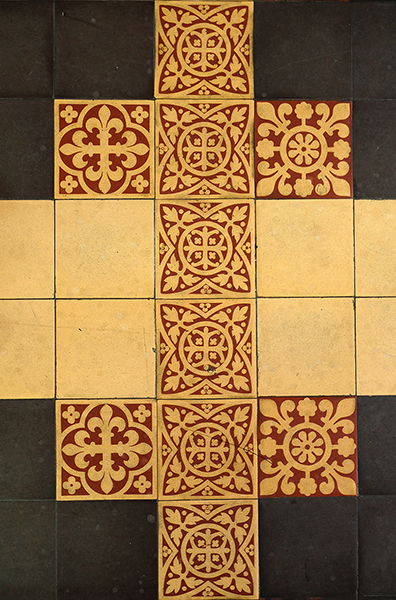 |
| Church of St. Mary |
 |
| Figures of Henry VI, St. George and Queen Margaret in the window at the west end |
 |
| Church of St. Mary |
 |
| Figures of Henry VI, St. George and Queen Margaret in the window at the west end |
 |
 |
|
| View to the west from the end of the nave | Organ in the choir | |
 |
 |
|
| Tiles before the altar rail | The anvil recovered from the old blacksmith's shop |
 |
| Plaque on the modern building facing the church |
I first visited Mucklestone in 2002 with a very early digital camera capable of taking only low resolution pictures. It had long been my intention to return with a more modern camera on a day with good weather. After 19 years, I arrived in July 2021 with Covid19 regulations still in force. While many churches have been closed or opened only limited hours during the pandemic, I was fortunate to find the church open. Moreover the church warden was there to welcome me and unlock the door to the west end so that I could see the window commemorating the Battle of Blore Heath during the Wars of the Roses..
At the time of the Domesday survey there was a priest at Mucklestone, suggesting the presence of an early church. In the reign of Henry II (1154-1189) lands at Mucklestone were given to Combermere Abbey. Later the the patronage of the church was associated with the manor of Mucklestone and the family that took its name from the village. The parish church was rebuilt and the tower extended to four stages in the 13th century. Today it is lower than at that time, with the battlement and pinnacles probably constructed in the 16th century.
The church and tower were restored between 1786 and 1790 with the nave and chancel extensively rebuilt. In 1883 a further restoration was carried out by Lynam and Rickman of Stoke-on-Trent, with the expenses paid mainly by the patron, the Earl of Crewe. The nave and chancel were completely rebuilt so that all the external stonework dates from this period. The tower was also restored at this time. Some of the interior stonework may date from the 1790 restoration or be medieval. There is a north aisle to both the nave and chancel with the latter forming the Chetwode chapel with memorials to the family, who were lords of the manor from the late 14th century until the 20th century.
There are 13 stained glass windows dating from the late 19th century created by Kempe and donated by Lady Alice Chetwode. One features Margaret of Anjou, wife of Henry VI, who is said to have witnessed the battle of Blore Heath from the top of the tower in 1459. According to the story, when she saw that the Lancastrians were defeated, she and her close companions had their horses' shoes reversed by the blacksmith near the church and made their escape. There is an anvil in the churchyard that came from the former blacksmith's workshop that is reputed to be the one from 1459,
Henry VI lived from 1421 to 1471, succeeding his father, Henry V, in 1422 while still an infant. He married the formidable Margaret of Anjou in 1445. After the loss of the lands gained in France during the Hundred Years War, Richard Duke of York claimed the throne. Richard was killed in 1460 and his son claimed the throne in 1461 as Edward IV. Henry VI was captured in 1465, temporarily restored in 1470 then imprisoned again and murdered in 1471. He spent some time in hiding in 1464 with Sir Ralph Pudsey in Bolton by Bowland in the upper Ribble Valley near Clitheroe and may have been influential in the design of the church tower there. He was betrayed and captured at Waddow Hall.
Information card in the church.
The Buildings of England, Staffordshire, by Nikolaus Pevsner, Penguin,
1974, ISBN 0 14 071046 9
The King's England, Staffordshire, by Arthur Mee, Hodder and Stoughton,
London, first published in 1937.
The Old Parish Churches of Staffordshire, by Mike Salter, Folly Publications,
1996, ISBN 1871731 25 8